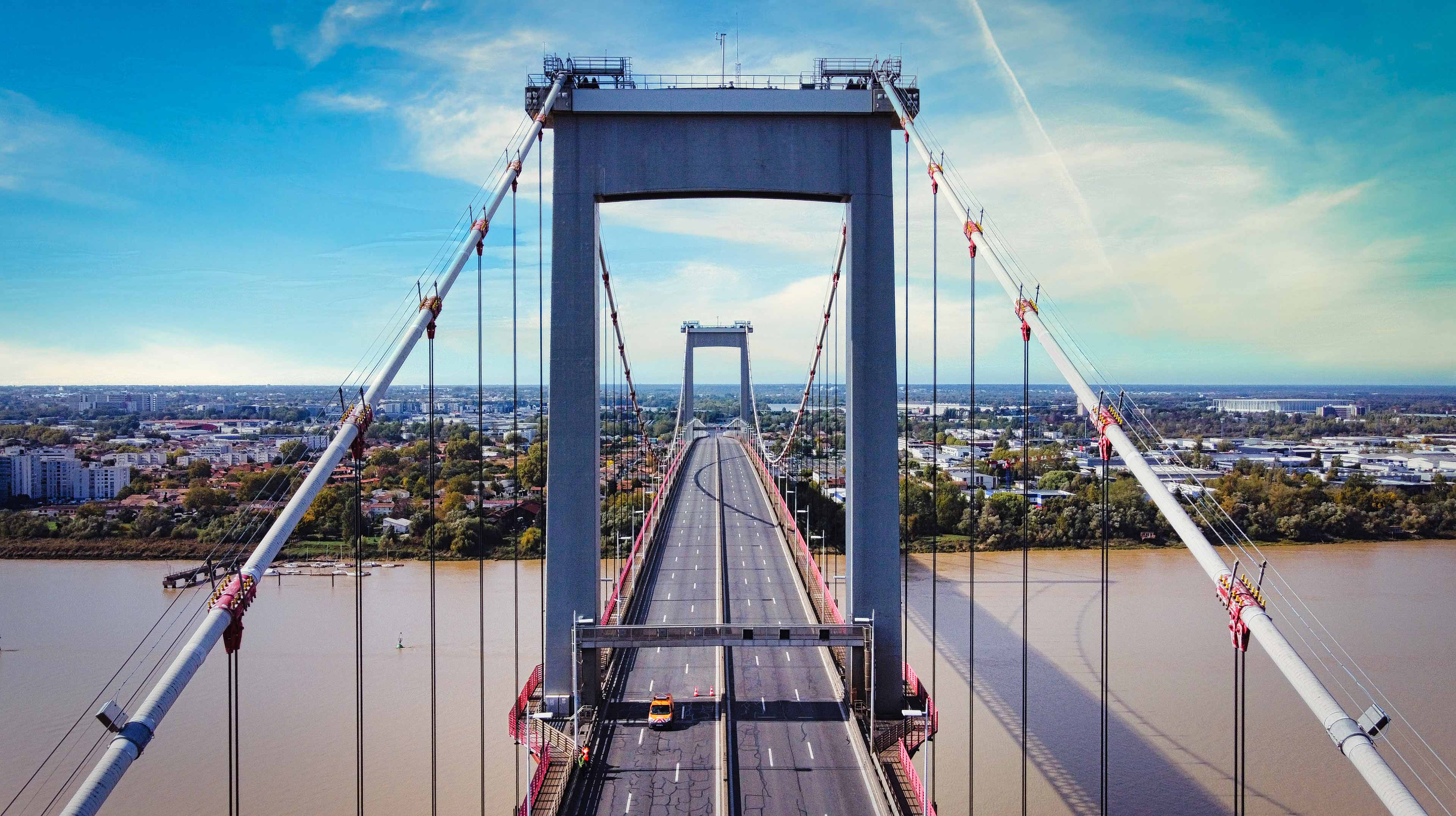
Precise Movement Monitoring at the Aquitaine Bridge in France
Daily automatically processed results with the autonomous TEXtant® GNSS Movement Monitoring Network
In collaboration with the French agency Cerema, Texplor Geontech introduces the Structural Health Monitoring (SHM) initiative at the iconic Aquitaine Bridge in Bordeaux, France. Leveraging the millimeter-precise X-Y-Z movement results of the TEXtant® GNSS network system, accessible daily in the innovative TEX-Sky Monitoring Cloud, this initiative represents a paradigm shift in infrastructure monitoring. The incorporation of multi-sensors in this Generation 4.0 SHM network revolutionizes structural health monitoring, ensuring long-term public safety and infrastructure resilience.

Highlights of the project
- Consistent daily results with millimeter precision since April 2022
- Convergence with existing reference system
- Absolute values in X-Y-Z with autonomous monitoring
- Automatic daily processing with precise point positioning (PPP)
Latest SHM 4.0 technologies to protect
and monitor critical infrastructure
The renowned Aquitaine Bridge in Bordeaux, France, completed in 1967, stands as an architectural marvel and a prominent landmark in the city’s skyline. Its enduring presence underscores the significance of diligent monitoring and maintenance to uphold structural integrity and ensure public safety. Collaboratively undertaken by Texplor Geontech and Cerema, the project leverages the innovative TEXtant® GNSS Network System to meticulously record daily movements across the bridge’s X-Y-Z axes. This initiative not only advances our understanding of structural behavior but also reinforces the imperative of employing cutting-edge technologies to safeguard critical infrastructure.
It is crucial to start long-term measurements of existing infrastructure objects, such as bridges, as soon as possible. Once we start measuring, we can identify correlations and learn from the data when a bridge needs to be closed or rebuilt, or whether we can use it for another 10 or 20 years.”
Bastian Merten, MSc.
CTO, Texplor Geontech

Empowering Structural Engineers with daily millimeter-precise movement insights
TEXtant® GNSS stations revolutionize structural monitoring by providing engineers with daily X-Y-Z, speed, and directional movement data, offering unparalleled insights into structural behavior. With automatic data processing powered by Precise Point Positioning (PPP) technology, TEXtant® ensures seamless monitoring, significantly reducing time and resource expenditures. Our innovative Monitoring Network supports up to four antennas per GNSS station, enabling the integration of essential SHM sensors like temperature, acceleration, and inclination, facilitating comprehensive monitoring solutions tailored to specific project needs.
- Autonomous TEXtant® GNSS stations
- Automatic data processing with PPP
- Daily processed data with millimeter accuracy and precision
- Scalable network system
- Up to 4 antennas per GNSS station
- Integration of other SHM sensors such as temperature, acceleration, inclination, etc.
With TEXtant® we have solved the problem of data processing, we have made it automatic and we have also made the system work as a stand-alone system, which gives customers a very easy way to install and use our system.”
Ahmed Elsaid, MSc.
Head of Research and Development, Texplor Geontech
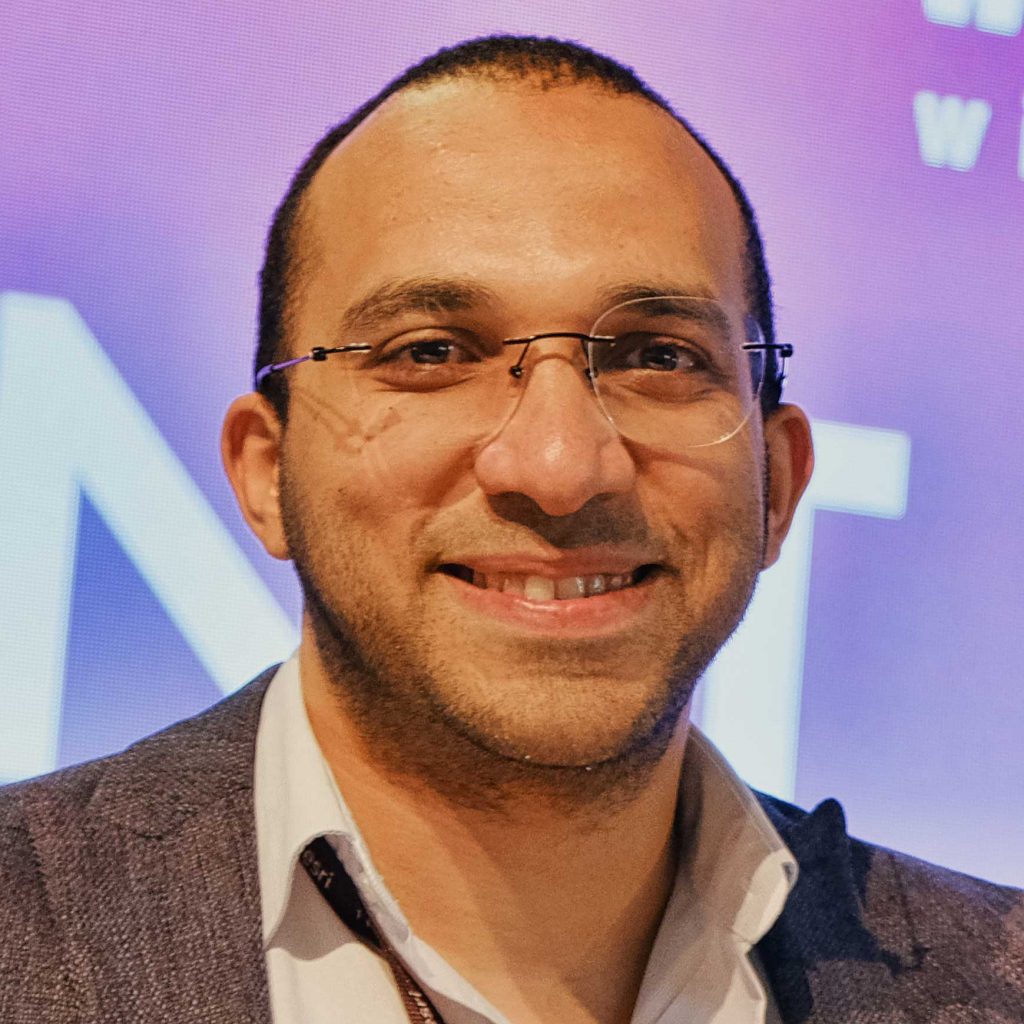
Access all daily results at TEX-Sky Monitoring Cloud
The daily automatically processed results with PPP method are accessible at TEX-Sky Monitoring Cloud. Access all monitoring results in one centralized platform, featuring daily updates, monthly mapping, synchronized databases, and secure data storage.
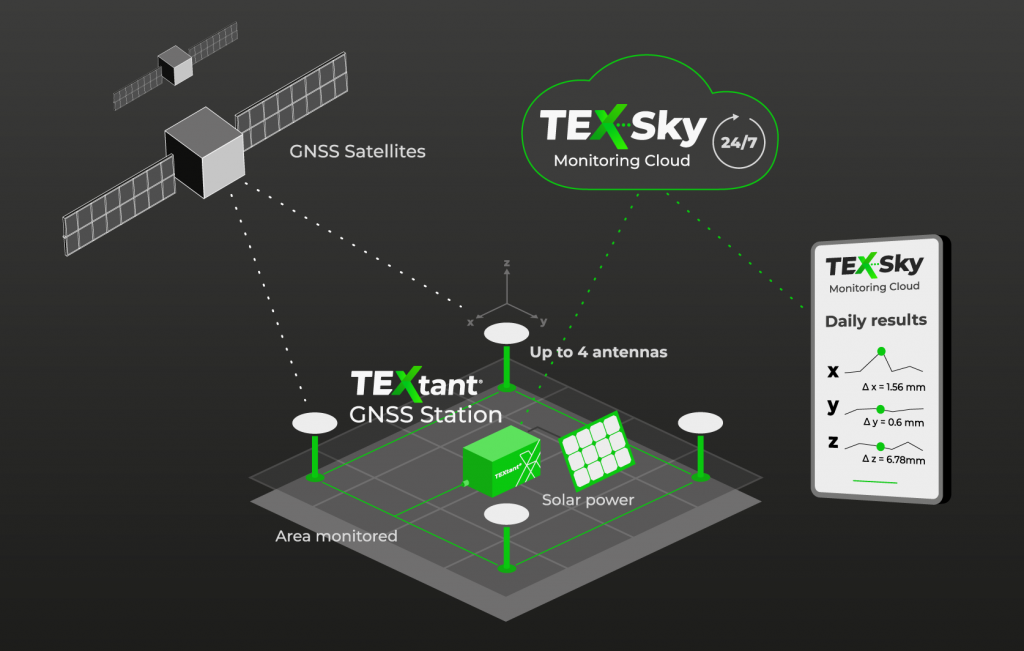
Quick installation of the autonomous GNSS system
Since April 2022, we have been monitoring one of the two 90-meter-high pylons of the Aquitaine Bridge with the TEXtant® GNSS monitoring system. The 90-meter-high pylons are subject to different movements due to thermal effects. We previously evaluated the system’s performance on another section of the structure and measured the movements caused by temperature fluctuations and traffic-related loads.
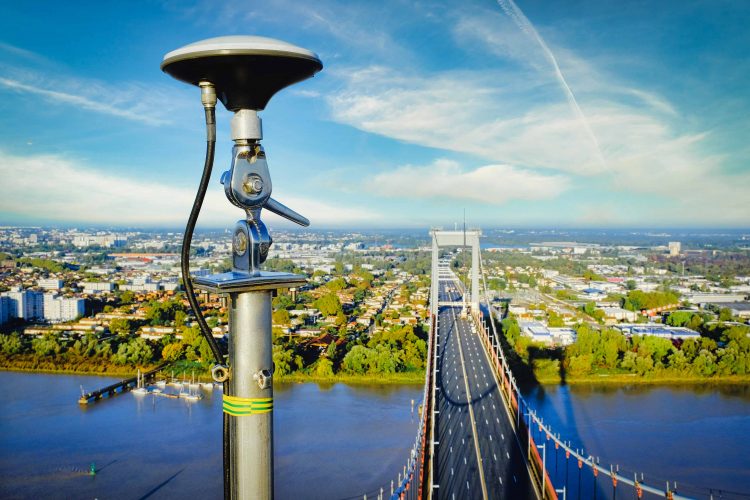
The TEXtant® GNSS monitoring system operates autonomously as a stand-alone system, which has great advantages during commissioning and when changing the measurement position. Installation of the TEXtant® system is quick and easy and requires little specialist knowledge. After mounting the antenna and switching on the device, automatic operation and processing is started. The data is seamlessly uploaded to the TEX-Sky Monitoring Cloud right from the start, so that the user has the results available on a daily basis.
This autonomous and automatic functionality ensures efficient monitoring without the need for additional manual intervention.
The TEXtant® GNSS system is a very interesting solution because it allows us to have millimetre-accurate movement measurements in absolute values on a daily basis and it does not require a reference point.”
John Dumoulin, MA
Expert of Structural Instrumentation at Cerema Sud-Ouest
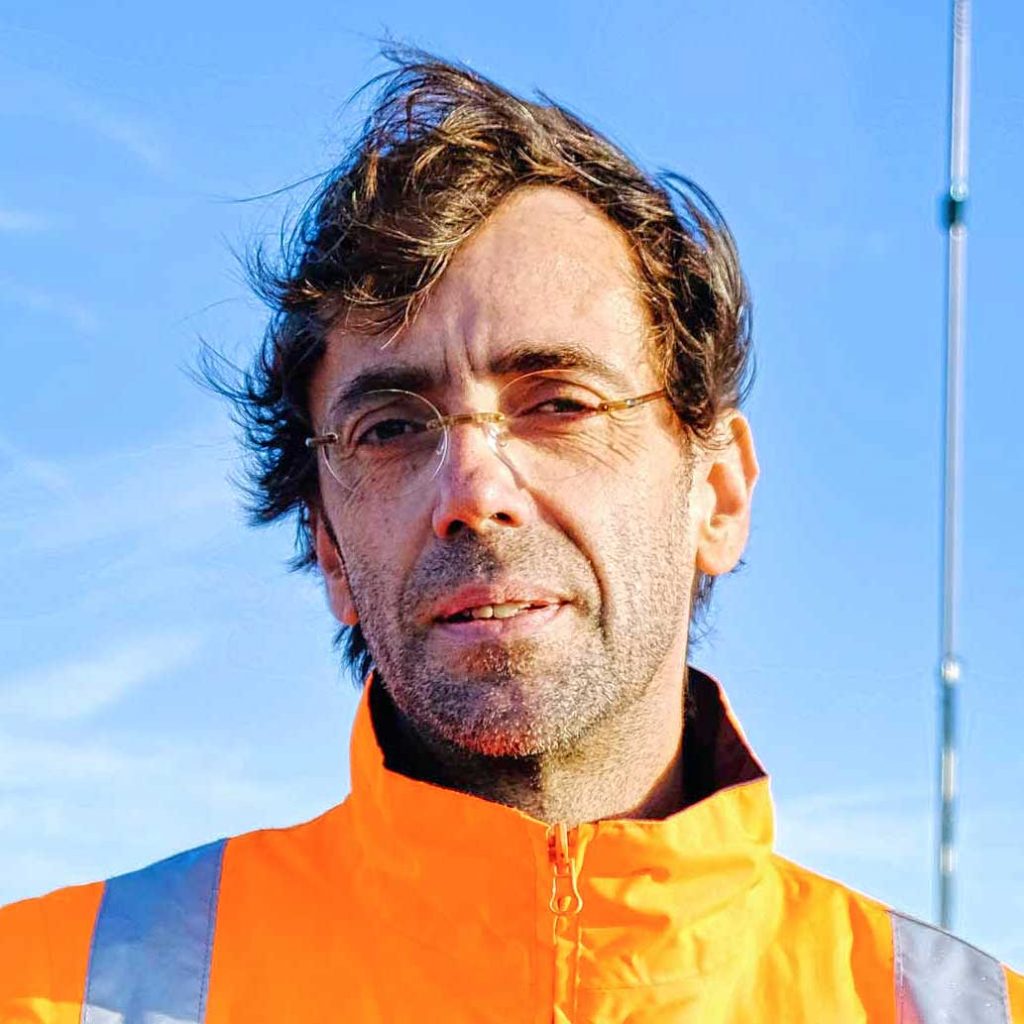
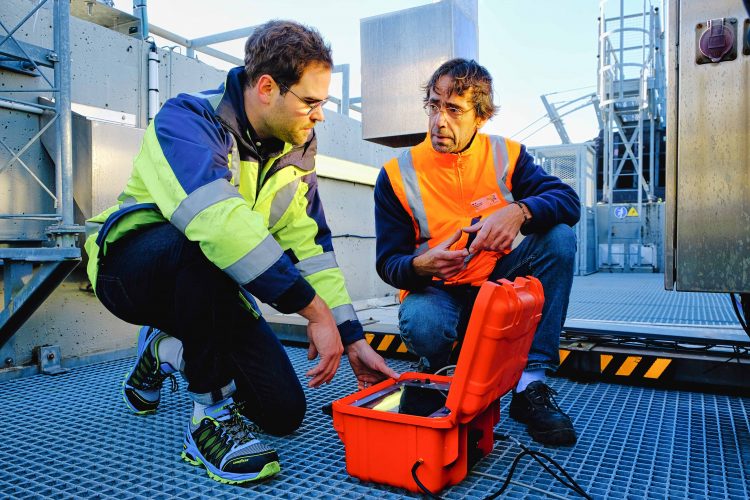
Identical results with the geodetic reference system
In collaboration with Cerema, the performance of the TEXtant® GNSS system was thoroughly tested against the on-site geodetic reference system using conventional base and rover technology. The results of the comparison with the on-site geodetic reference system were identical, confirming the millimeter accuracy of the TEXtant® system.
Currently, the results are very encouraging, we have a convergence between the results of the TEXtant® system and the system used as a reference, which enables us to evaluate displacements at millimeter-level on a daily basis.”
John Dumoulin, MA
Expert of Structural Instrumentation at Cerema Sud-Ouest

Movement changes correlate with temperature values
The Aquitaine Bridge experiences seasonal expansions due to varying weather conditions, including cold and hot temperatures, which naturally affect its structure. Analysis indicates a strong correlation between the movements of the pylons and temperature fluctuations. Synchronous display of correlated data within the TEX-Sky time-synchronized database allows for comprehensive structural condition analysis.
Correlation between movement (x) and temperature results (°C)
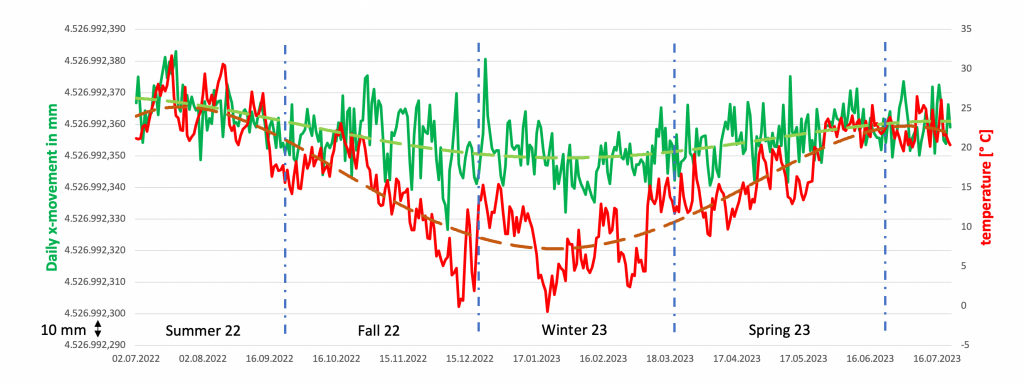
Understanding the correlation between temperature variations and structural movement is crucial for assessing the bridge’s condition accurately. Only by synchronously displaying correlated data can meaningful analyses be conducted to evaluate the structure’s health. As Bastian Merten explains, long-term data spanning several years enables engineers to identify trends, such as increasing expansions or potential cracks, highlighting the importance of leveraging advanced monitoring technologies to analyze big data effectively.
With the advanced database of the TEX-Sky Monitoring Cloud we will see instantly the correlation between the different parameters, and the reason why the bridge or object is moving at the moment. This is all possible with big data and the TEXtant® GNSS Network Technology.
Bastian Merten, MSc.
CTO, Texplor Geontech

Advanced Multisensor SHM 4.0 with TEX-Sky
As structures are designed to last for decades or even centuries, it is essential to monitor them continuously in order to ensure the safety of their use or to be able to detect damage in good time. The TEX-Sky Monitoring Cloud, offers significant advantages by synchronizing data from multiple TEXtant stations and integrating various sensors, such as temperature, acceleration, strain, moisture, inclinometer and other client sensors. We are constantly developing new features with the TEX-Sky to provide clients with weekly and monthly automatically generated correlation reports, facilitating comprehensive structural condition analysis. Within the TEX-Sky time-synchronized database, these reports enable the observation of correlations between different datasets, enhancing the understanding of structural behavior over time.
By integrating various sensors into the synchronized GPS data network of TEX-Sky, we achieve a deeper understanding of structural movement, marking a significant advancement in Structural Health Monitoring. This represents the 4th generation of SHM we now perform with the TEX-Sky Monitoring Network.”
Ahmed Elsaid, MSc.
Head of Research and Development, Texplor Geontech

Contact us, we help you get started
Explore the future of Advanced GNSS Movement Monitoring with us!